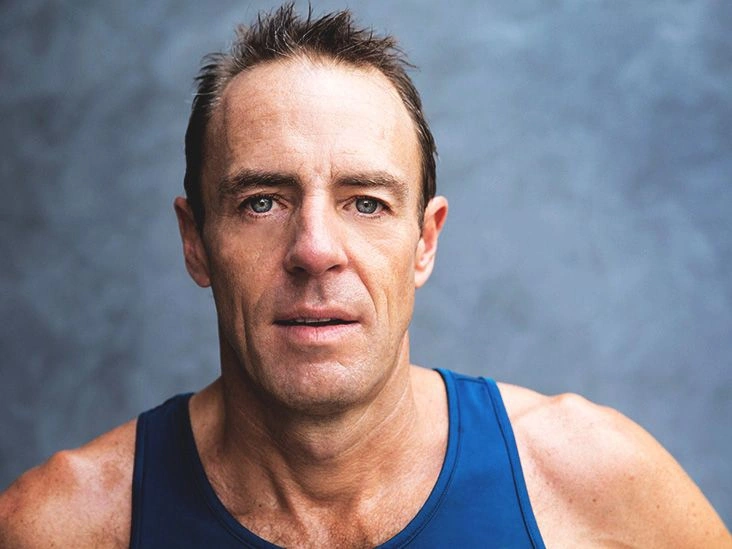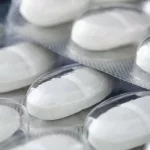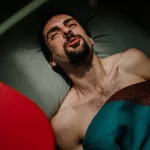Male pattern balding, also known as androgenic alopecia, is one of the most frequent causes of hair thinning and loss for people with a penis as they age.
People with a uterus can experience this same form of hair loss as well. Up to a large portion of the population will notice some degree of hair loss over time.
Sex hormones are thought to be the primary underlying drivers of male pattern hair thinning.
Dihydrotestosterone (DHT) is an androgen — a sex hormone involved in developing characteristics commonly associated with having a penis, such as body hair. However, DHT can also accelerate and advance hair loss.
There are therapies designed to slow male pattern balding by specifically addressing DHT. Below we’ll explain how DHT works, how it relates to your hair and testosterone, and what steps you can take to halt or at least delay male pattern hair loss.
What does DHT do?
DHT is produced from testosterone. Testosterone is a hormone present in everyone. Both testosterone and DHT are androgens, hormones that shape sex characteristics in people with a penis during puberty.
Those characteristics include:
- a deeper voice
- greater body hair and muscle development
- growth of the penis, scrotum, and testicles as sperm production begins
- changes in how fat is stored across the body
As you age, testosterone and DHT continue to support many bodily functions, such as preserving muscle mass and supporting sexual health and fertility.
People with a penis generally have higher testosterone levels. Around 10 percent of adult testosterone is converted into DHT via an enzyme called 5-alpha reductase (5-AR).
Once circulating in your bloodstream, DHT can attach to receptors on scalp hair follicles, prompting them to shrink and lose their capacity to sustain a full head of hair.
DHT’s effects go beyond the scalp. Research has associated elevated DHT with conditions such as:
- enlarged prostate
- prostate cancer
- polycystic ovary syndrome (PCOS)
Having too little DHT
Insufficient DHT can also interfere with sexual development during puberty.
Low DHT may delay pubertal onset in any sex. Beyond that, low DHT doesn’t appear to cause many issues for people with a uterus, but in those with a penis, low DHT can lead to:
- late or incomplete maturation of sexual organs such as the penis or testes
- altered fat distribution, sometimes resulting in conditions like gynecomastia
- reduced growth of body hair
Why DHT affects people differently
Your predisposition to hair loss is genetic — it’s inherited within families.
For instance, if you have a penis and your father experienced male pattern balding, you’re more likely to follow a similar balding trajectory as you get older. When someone is already inclined toward male pattern hair loss, DHT’s follicle-shrinking influence tends to be stronger.
The shape and dimensions of your scalp can also play a role in how quickly DHT affects your follicles.
DHT’s connection to balding
Hair across your body emerges from tiny structures beneath the skin called follicles, essentially small capsules that house a single hair strand.
Each follicle’s hair goes through a growth cycle typically lasting about two to six years. Even after shaving or cutting, the same hair will regrow from the follicle’s root.

When this cycle ends, the hair enters a resting phase and then falls out a few months later. Following that, the follicle produces a new hair and the cycle repeats.
Elevated levels of androgens like DHT can miniaturize hair follicles and shorten the growth cycle, causing strands to thin, become more fragile, and fall out sooner. DHT can also delay the time it takes for follicles to generate new hairs after older hairs are shed.
Some individuals are more vulnerable to DHT’s effects on scalp hair because of variations in the androgen receptor (AR) gene. Androgen receptors are proteins that permit hormones such as testosterone and DHT to bind to them, triggering usual hormonal actions like body hair growth.
However, certain AR gene variants can heighten androgen sensitivity in scalp follicles, increasing the likelihood of male pattern hair loss.
DHT vs. testosterone
Testosterone is the most plentiful and active androgen in the bodies of people with a penis. It’s responsible for numerous sexual and physiological roles, including:
- regulating androgen hormone levels throughout the body
- controlling sperm production
- maintaining bone density and muscle mass
- aiding in body fat distribution
- influencing mood and emotional regulation
DHT is a metabolite of testosterone and contributes to some of the same sexual and physiological functions, but it is significantly more potent. DHT binds to androgen receptors more persistently, amplifying the effects that derive from testosterone activity in the body.
How to reduce DHT
There are several treatments for DHT-related hair loss, many of which work by specifically targeting DHT production or blocking its receptor binding. These approaches fall into two categories:
- Blockers: These stop DHT from attaching to 5-AR receptors, including those in hair follicles that permit follicle shrinkage.
- Inhibitors: These lower the body’s production of DHT.
Finasteride
Finasteride (Proscar, Propecia) is an oral prescription medication. A review of topical and oral finasteride reported improved hair counts in men after 12 weeks versus placebo, and topical finasteride was generally well-tolerated.
Finasteride binds to 5-AR enzymes to prevent DHT formation and reduce DHT’s ability to interact with follicles, helping prevent follicle miniaturization.
Minoxidil
Minoxidil (Rogaine) is a peripheral vasodilator, meaning it helps widen blood vessels so blood flows more easily. It’s commonly used to treat high blood pressure, but when applied directly to the scalp, minoxidil can also promote hair growth.
Biotin
Biotin, or vitamin H, is a B vitamin that helps convert certain foods and liquids into usable energy.
Biotin also supports and preserves levels of keratin, a protein found in hair, nails, and skin.
Research hasn’t fully explained how biotin influences keratin, but a review indicates biotin may improve hair quality and texture.
Biotin can be taken as an oral supplement and is also present in foods like egg yolks, nuts, and whole grains.
Pygeum bark
Pygeum is an extract from the bark of the African cherry tree, usually available as an oral herbal supplement.
Pygeum bark is commonly cited as a potential treatment for an enlarged prostate and prostatitis because of its DHT-blocking properties. For this reason, it’s also been suggested as a possible therapy for DHT-related hair loss, though evidence supporting its efficacy as a standalone DHT blocker is limited.
Pumpkin seed oil
Pumpkin seed oil is another agent proposed to block DHT and has shown promise.
An animal study on mice found topical pumpkin seed oil reversed testosterone’s effects and encouraged hair growth after three weeks.
Caffeine
Research on caffeine’s impact on hair growth is sparse. Nevertheless, earlier studies suggest caffeine may help deter hair loss by:
- prolonging the growth phase of hair
- encouraging keratin production
Vitamin B
Deficiencies in B vitamins, especially B-6 or B-12, can lead to symptoms including hair thinning or loss.
B vitamins are vital for overall health; while taking a B-complex supplement may not restore hair already lost, it may help prevent further hair shedding.
Side effects of DHT blockers
Reported side effects of DHT-blocking treatments include:
- erectile dysfunction
- premature or delayed ejaculation
- increased breast tissue and tenderness
- skin rash
- nausea
- vomiting
- darkening and thickening of facial and upper-body hair
- congestive heart failure from fluid or salt retention, a particular risk with minoxidil
Other causes of hair loss
DHT isn’t the only reason your hair may be thinning or falling out. Other possible causes include:
Alopecia areata
Alopecia areata is an autoimmune disorder in which the immune system attacks hair follicles on the scalp and elsewhere.
While it often begins with small patches of hair loss, it can progress to total hair loss on the:
- scalp
- eyebrows
- facial hair
- body
Lichen planus
Lichen planus is another autoimmune disease that causes the immune system to target skin cells, including those on the scalp, leading to follicle damage and hair shedding.
Thyroid conditions
Thyroid disorders that cause the gland to produce too much (hyperthyroidism) or too little (hypothyroidism) thyroid hormone can lead to scalp hair loss.
Celiac disease
Celiac disease is an autoimmune reaction to gluten, a protein found in foods such as wheat, oats, and other grains, which can cause digestive issues and is associated with hair loss.
Scalp infections
Various scalp problems, particularly fungal infections like tinea capitis (ringworm of the scalp), can make the scalp scaly and inflamed and cause hair to fall from infected follicles.
Bamboo hair
Bamboo hair describes hair strands that appear thin, knotted, and segmented rather than smooth. It’s commonly seen in Netherton syndrome, a genetic disorder that causes excessive skin shedding and abnormal hair development.
Frequently asked questions
Does high DHT mean high testosterone?
DHT is produced from testosterone. Low testosterone is more common, but elevated testosterone can occur and lead to increased DHT levels.
About 10 percent of testosterone converts into DHT. DHT is a considerably stronger hormone than testosterone.
Is blocking DHT good or bad?
DHT blockers can slow hair loss progression by preventing testosterone’s conversion to DHT.
Both chemical and herbal DHT blockers are available. Chemical options include prescription medications, while herbal options include remedies like pumpkin seed oil.
DHT blockers may slow hair loss for those with a genetic predisposition, but they are not a permanent cure.
The takeaway
DHT is a major and well-established contributor to male pattern hair loss. It interacts with genetic predisposition and natural aging processes to cause hair thinning.
Numerous treatments targeting DHT exist, and reducing hair loss can improve how you feel about your appearance. Consult a healthcare provider first, since not all treatments are safe or effective for everyone.


















Leave a Reply
You must be logged in to post a comment.